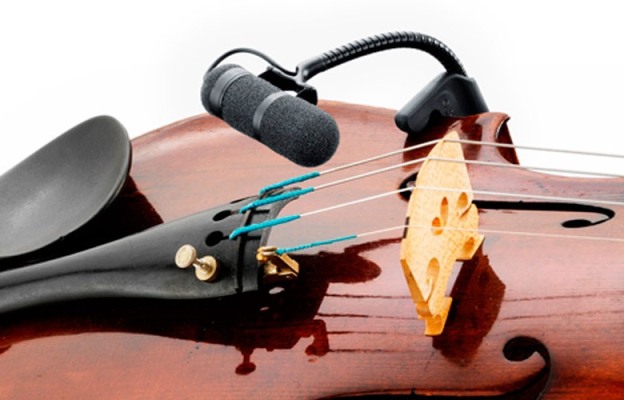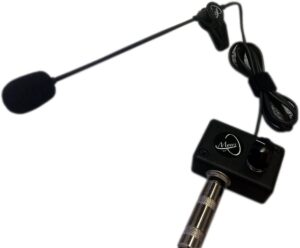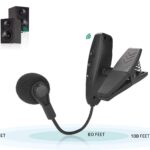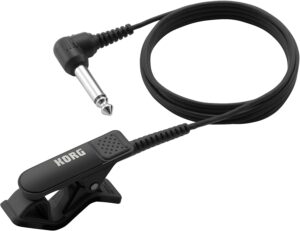If you play classical cello, you want to sound as good as possible when performing on stage. Cello microphones are great for amplifying your sound and make sure people hear what you’re playing. They’re also great in recording studios so that you can isolate the sound of your cello. Even if you use a cello pickup, it’s still worth considering a microphone to capture the sound more naturally.
You could also decide to get an electric cello, which will allow you to amplify and mix the sound in any way that you want. There are many microphones for cellos out there, but it may be hard to figure out which one is the best. Our recommendations in this article should help you decide which is the best microphone for your needs.
Top Cello Microphones Review
1. HEIMU Clip On Cello Condenser Microphone
Great for PA amplification and live recording, the HEIMU mic will make your cello sound like you’re playing in a great space.
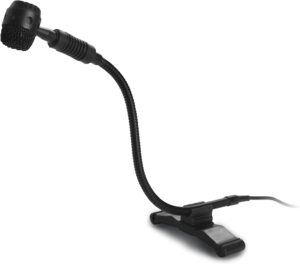
2. Shure PGA98H-XLR Cardioid Condenser – Best Cello Microphone
This mic is great for clear playback of sound and is perfect to use with your cello. The cardioid pattern picks up audio from the desired source while ignoring unwanted noise. The gooseneck is bendable so that the mic can be mounted at any angle you want.
Features:
- Flexible gooseneck
- In-line preamplifier
- Clear sound reproduction
3. Imelod Contact Microphone
For any cellist looking for an affordable microphone, this is it. At less than $10, this piezo mic works by sitting closely against the sound source. It’s got double sided tape and Velcro for mounting – so you can attach it to pretty much anything. Just plug it into your console and you’re good to go!
4. Audio-Technica PRO 35 Cardioid Condenser
This is a great overall mic that’s good for studio and live recordings. It has a unique recording setting which limits the sound of your surroundings. It consists of a UniMount clip which provides accurate positioning and prevents shocks.
This microphone has a baffle-and-baffled shape which helps reduce the sound of sounds coming from the rear and sides of it. This, in turn, improves how isolated your desired sound source will sound. This microphone has extended frequency response that can pick up subtle nuances in your performance. You could also attach it to a mixing console or mic stand with its six-inch cable.
5. DPA D:vote CORE 4099
The DPA d:vote 4099V – Cello Mic w/Clip is great for capturing impressive cello sounds. It’s super-cardioid condenser could make your recordings standout.
You’ll find that this cello microphone attaches to your instrument very gently, and offers an excellent sound quality. This cello microphone is especially well-suited for those who are tired of performing with a stand mic.
6. The Feather Cello Pickup – Best Wireless Microphone
It has a built-in active preamp which can produce the richest sound. The Feather is a really easy to position microphone.
It’s so small you can use it to get the best sound, or have it facing away from you. Place it virtually anywhere on your cello. Made in the USA.
Features:
- Lightweight
- Internally powered
- Plug and play
7. Audio Technica Unimount Microphone
The Audio Technica Unimount Microphone has a flexible boom arm so it can attach to your cello. It also makes sure that handling noise isn’t an issue, so you get high-quality content for your video.
8. Amoper Wireless Cello Microphone
This is a super small microphone but it packs a lot of audio power. It’s sensitive enough to pick up the sound of your cello with great accuracy.
With a wireless range of 131 feet, you can take your cello with you anywhere you go. Whether you’re rocking in the audience on stage, twist and twirl to your heart’s content! The 360-degree rotatable silicone shock-proof clip and strong steel collar clip on this mic make it easy to fit it onto any violin.
9. ZINGYOU Condenser Microphone
As an alternative to most of the mics in this list, if you’re willing to use a mic stand, the ZINGYOU Condenser Microphone is a great option. It mimics the microphones used in professional recording studios.
The capsule at the input generates sonic sound waves when hit by waves of sound, meaning that it replicates the original sound with accuracy.
10. Korg CM200BK Clip-On Contact Microphone
Korg is famous for their cello tuners, but they also make great cello microphones.
All you have to do is clip the cord on your tailpiece or cello bridge and you’ll be able to record good sound quality. The 5-ft long cord should give you plenty of room for playing around.
What to Look for in Cello Microphones
In order to buy the right cello microphone or cello pickup you need to evaluate the potential options on several criteria. We’re breaking down a few of the features you should consider.
What Polar Patterns, Proximity Effects, and Sensitivity do you Need?
To get the best microphone for your cello, make sure you check the specifications in terms of polar patterns, proximity effects, and sensitivity. These will depend on what recording equipment you use & whether your instrument needs to be close or held away from it.
What Sound do you Want?
This should be an important factor to keep in mind while picking out a microphone. Some are able to amplify more than others and some make it sound more clear. One of the downsides is that they might have a metallic sound and high end. To be able to sound your best, you will want to get a good mic. If the quality of the mic is terrible, it can affect your performance. Therefore, go for the high-quality mics and have an awesome performance!
Do you Need a Cello Microphone or Cello Pickup?
It’s generally preferable to record with a cello microphone, while those who play a cello live often use a pickup. A pickup will attempt to mimic the sound of an electric cello when plugged in, whereas unplugged a cello is generally better off using the instrument’s built-in microphone.
You can technically substitute them, but they’ll perform best if used as intended. We mostly cover cello microphones here, but you can find more of our recommendations here. These are just a few things you should think about before picking the perfect cello microphone. The more you know about it, the easier it’ll be to find what will work for your needs.
Conclusion
We definitely advocate that cello players should invest in the best available mics. When you’re trying to perform for a large audience, it can be tough. Luckily, there are gadgets like this that will help make your voice louder!
The products vary a lot, so you should make sure to consider their differences. With that in mind, you’ll be able to decide on the best one for your preference.
FAQ for Best Cello Microphones
What is a cello microphone?
This type of microphone is used to record stringed instruments such as violins and violas, as well as other instruments that make a sound similar to a cello.
The sound quality of this microphone is excellent, which makes it ideal for recording live music performances.
It can also be used in a studio environment when an artist needs to record an acoustic performance with his instrument, rather than using synthesized sounds from a keyboard or guitar.
What are the best cello microphones for beginner?
The best cello microphone for beginners is the Audio-Technica AT2020. It has a great price and it is an entry-level microphone that provides a decent sound quality.
A cello microphone is a type of instrument mic that is used to record the sound of a cello. A good cello microphone has to have three things:
1) good sound quality,
2) compatibility with your instrument,
3) durability.
What the most important features of a cello microphone?
A cello microphone has to be able to pick up the sound of the cello without picking up the sound of other instruments. It also needs to be able to produce a clear and accurate sound without any distortion. The best way for a microphone to do this is by using a cardioid pattern.
The cardioid pattern isolates the sound coming from one direction, which makes it perfect for picking up the sound of an instrument with lots of noise in its environment.
What is the average price for a cello microphone?
The average price for a cello microphone is about $150.
What size should a cello microphone be?
The size of the cello microphone is dependent on the distance it needs to be from the instrument.
Why is it important to use the right mic for cello?
The cello has a very rich, deep sound that is created by the vibrations of its strings. These vibrations are then picked up and amplified by the cello’s body and soundboard. The quality of your sound is dependent on how well these two parts are constructed, and it is also dependent on your choice of microphone.
The sound waves from the strings travel to the bridge, which divides them into two parts: treble and bass. The treble waves go through an opening in the bridge called a f-hole to reach the top of the instrument, where they are picked up by a small microphone near the tailpiece. Bass waves travel along an opening in the bridge called a bass-bar to reach a large microphone near their base.
What are the different types of cello microphones?
The cello microphone is a type of instrument microphone that is used in the recording industry. There are two different types of cello microphones: the boundary microphone and the pressure zone microphone.
The boundary microphone is a type of instrument mic that captures sound by placing it close to the sound source. It picks up sound from all directions and is often used for picking up ambient noise in addition to the desired sounds.
The pressure zone mic, on the other hand, captures sound by placing it close to the sound source but only picks up sounds coming from one direction. The pressure zone mic is typically used for picking up a more focused range of frequencies than what a boundary mic would capture.
What is the difference between a condenser and an electret microphone?
A condenser microphone is a type of microphone that uses an electrical charge to convert sound waves into an electric current. Condenser microphones are more sensitive than electret microphones and they usually have a better frequency response.
An electret microphone is a type of microphone that uses permanent electric charges to convert sound waves into an electric current. Electret microphones are less sensitive than condenser microphones and they usually have worse frequency response.
